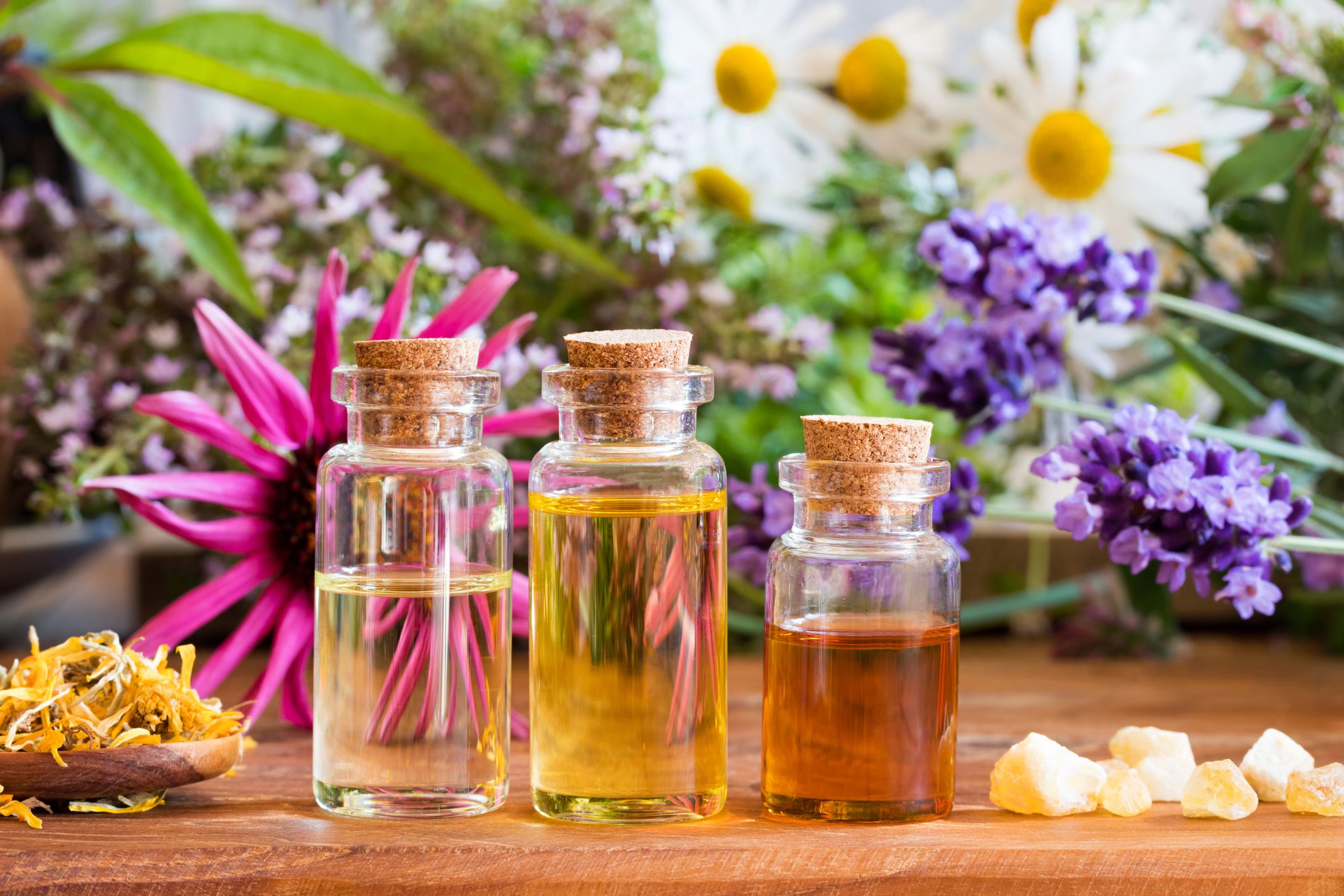The Ultimate Guide to Aromatherapy for Mental Wellness at Home: Essential Oils, Techniques, and Benefits
Ever walked into a space and felt an immediate sense of calm wash over you? Chances are, scent played a significant role. But can you harness that power to improve your mental health at home? Absolutely! Let's explore how.
Understanding Aromatherapy and Mental Well-being
Aromatherapy, the therapeutic use of plant-derived, aromatic essential oils, has been practiced for centuries. It works by stimulating the olfactory system, the part of the brain connected to smell, which directly impacts the limbic system, the area controlling emotions and memories. The aroma molecules in essential oils for anxiety can trigger physiological responses that promote relaxation, reduce stress, and improve mood. According to a 2024 study published in the Journal of Alternative and Complementary Medicine, participants who regularly used aromatherapy reported a 25% decrease in anxiety symptoms compared to the control group.
Choosing the Right Essential Oils for Your Needs
Selecting the appropriate essential oils is crucial for successful aromatherapy. Different oils possess unique properties that cater to various mental wellness needs. Here's a breakdown of some popular choices and their benefits:
- Lavender: Known for its calming and relaxing properties, lavender is excellent for reducing stress, anxiety, and promoting sleep.
- Chamomile: Similar to lavender, chamomile possesses soothing effects and can help alleviate anxiety and insomnia.
- Bergamot: This citrus oil is uplifting and can help combat feelings of sadness and depression. However, be mindful of its phototoxic properties; avoid direct sunlight exposure after topical application.
- Frankincense: Grounding and centering, frankincense is beneficial for meditation and reducing feelings of overwhelm.
- Rose: Emotionally uplifting and balancing, rose can help with feelings of grief, sadness, and anxiety.
- Ylang-Ylang: Known for its aphrodisiac and calming properties, ylang-ylang can reduce stress and promote relaxation.
- Sandalwood: Creates a sense of calm and mental clarity. Useful for meditation and deep relaxation.
When purchasing essential oils for depression, ensure they are 100% pure and therapeutic grade. Read labels carefully and research reputable brands to avoid synthetic fragrances or diluted oils that lack therapeutic benefits.
Creating Your Home Aromatherapy Sanctuary: Techniques and Methods
Transforming your home into a haven of tranquility with aromatherapy is easier than you think. There are several ways to incorporate essential oils into your daily routine. Here are a few popular methods:
Using an Aromatherapy Diffuser
An aromatherapy diffuser is one of the most effective ways to disperse essential oils throughout a room. There are several types of diffusers available, including:
- Ultrasonic Diffusers: These diffusers use water and ultrasonic vibrations to create a fine mist that carries the essential oil molecules into the air. They also act as humidifiers, which can be beneficial in dry environments.
- Nebulizing Diffusers: These diffusers do not use water. They use pressurized air to atomize the essential oil, creating a concentrated mist. Nebulizing diffusers are more potent than ultrasonic diffusers and are ideal for larger spaces.
- Heat Diffusers: These diffusers use heat to evaporate the essential oil. While they are a less expensive option, the heat can alter the chemical composition of the oil, reducing its therapeutic benefits.
To use a diffuser: Add the recommended amount of water (if applicable) and essential oil to the diffuser. Start with a few drops and increase as needed. Typically, 3-5 drops are sufficient for a small room. Turn on the diffuser and let it run for 30-60 minutes at a time. It's best to diffuse intermittently rather than continuously to avoid olfactory fatigue.
Creating Aromatherapy Blends
Experimenting with home aromatherapy blends allows you to tailor your aromatherapy experience to your specific needs and preferences. Blending oils can create synergistic effects, enhancing their individual benefits. Here's how to create effective blends:
- Understand the Fragrance Notes: Essential oils are categorized into top, middle, and base notes. Top notes are light and refreshing, middle notes are the heart of the blend, and base notes are grounding and long-lasting.
- Start Small: Begin with a small amount of each oil and gradually adjust the ratios until you achieve the desired scent.
- Keep a Record: Document your blends so you can recreate your favorites.
Here are a few sample blend recipes:
| Blend Name | Essential Oils | Purpose |
|---|---|---|
| Stress Relief Blend | Lavender (3 drops), Frankincense (2 drops), Bergamot (1 drop) | Reduce stress and anxiety |
| Sleep Blend | Lavender (4 drops), Chamomile (2 drops), Cedarwood (1 drop) | Promote restful sleep |
| Uplifting Blend | Bergamot (3 drops), Sweet Orange (2 drops), Ylang-Ylang (1 drop) | Boost mood and energy |
| Focus Blend | Rosemary (3 drops), Lemon (2 drops), Peppermint (1 drop) | Improve concentration and mental clarity |
Other Aromatherapy Methods for Your Space
Beyond diffusers, explore other ways to infuse your home with therapeutic scents:
- Aromatic Baths: Add 5-10 drops of essential oil to a warm bath. Be sure to dilute the oil in a carrier oil like jojoba or sweet almond oil before adding it to the water to prevent skin irritation.
- Massage Oils: Create a personalized massage oil by blending essential oils with a carrier oil. This is a great way to relieve muscle tension and promote relaxation.
- Room Sprays: Combine essential oils with water and a small amount of witch hazel in a spray bottle. Shake well before each use and spritz around the room.
- Inhalers: Personal aromatherapy inhalers offer discreet and portable stress relief. Add 10-15 drops of your favorite blend to the cotton wick of the inhaler.
Integrating Aromatherapy into Your Daily Routine for Maximum Mental Health at Home Benefits
Consistency is key to experiencing the full benefits of aromatherapy. Incorporating it into your daily routine can help you manage stress, improve your mood, and promote overall well-being. Here are some suggestions:
- Morning: Start your day with an invigorating blend of citrus oils like lemon or grapefruit to boost energy and focus.
- Midday: Combat afternoon slump with peppermint or rosemary to improve concentration and alertness.
- Evening: Wind down with lavender or chamomile to prepare for a restful night's sleep.
- Before Bed: Diffuse a calming blend of lavender, chamomile, and sandalwood in your bedroom to promote relaxation and improve sleep quality. You can also apply a diluted blend to your pulse points.
Pairing aromatherapy with other self-care at home practices, such as meditation, yoga, or journaling, can amplify its benefits.
Safety Precautions and Considerations
While aromatherapy is generally safe, it's essential to follow certain precautions:
- Dilution: Always dilute essential oils before topical application. Use a carrier oil such as jojoba, sweet almond, or coconut oil. A general guideline is 1-3% dilution for adults (1-3 drops of essential oil per teaspoon of carrier oil).
- Pregnancy and Breastfeeding: Some essential oils are not safe to use during pregnancy or breastfeeding. Consult with a qualified aromatherapist or healthcare provider before using essential oils if you are pregnant or breastfeeding.
- Children and Pets: Use essential oils with caution around children and pets. Some oils can be toxic to animals. Keep essential oils out of reach of children.
- Allergies: Perform a patch test before using a new essential oil to check for allergic reactions. Apply a small amount of diluted oil to a small area of skin and wait 24 hours to see if any irritation occurs.
- Photosensitivity: Certain essential oils, such as bergamot and other citrus oils, can cause photosensitivity. Avoid direct sunlight exposure after topical application of these oils.
Important Tip: Never ingest essential oils unless under the guidance of a qualified healthcare professional.
Troubleshooting
Headaches: If you experience headaches after using essential oils, it could be due to overexposure or sensitivity to a particular oil. Try reducing the amount of oil you are using or switching to a different oil.
Skin Irritation: If you experience skin irritation after topical application, discontinue use and wash the area with soap and water. You may need to further dilute the oil or choose a different carrier oil.
Nausea: Some essential oils can cause nausea, especially if inhaled in large quantities. If you experience nausea, get some fresh air and discontinue use of the oil.
Pro Tips
- Invest in high-quality, therapeutic-grade essential oils for anxiety from reputable sources.
- Store essential oils in dark glass bottles in a cool, dark place to preserve their potency.
- Experiment with different blends to find what works best for you.
- Combine aromatherapy with other relaxation techniques, such as meditation or yoga, for enhanced benefits.
- Listen to your body and adjust your aromatherapy routine as needed.
FAQ
Q: Can aromatherapy cure mental health conditions?
A: Aromatherapy is not a cure for mental health conditions, but it can be a valuable complementary therapy to help manage symptoms and improve overall well-being. It is important to consult with a mental health professional for proper diagnosis and treatment.
Q: How long does it take to see results from aromatherapy?
A: Some people experience immediate relief from symptoms like stress and anxiety, while others may take longer to notice a difference. Consistency is key, and it may take several weeks of regular use to experience the full benefits of aromatherapy.
Q: Can I use essential oils if I have allergies?
A: If you have allergies, it's important to perform a patch test before using a new essential oil. Choose oils that are less likely to cause allergic reactions, such as lavender or chamomile. Consult with an allergist or healthcare provider if you have any concerns.
Q: Is aromatherapy safe for pets?
A: Some essential oils are toxic to pets. It's important to research the safety of essential oils before using them around pets. Keep essential oils out of reach of pets and avoid diffusing them in enclosed spaces where pets are present. Consult with a veterinarian if you have any concerns.
With its gentle yet powerful impact, incorporating aromatherapy into your home environment can be a profound step towards enhancing your mental well-being. Experiment with different oils and techniques to discover what works best for you. Remember that this information is for educational purposes and is not a substitute for professional medical advice. What are your favorite relaxing aromatherapy techniques or calming essential oils? Share your experiences and questions in the comments below!


